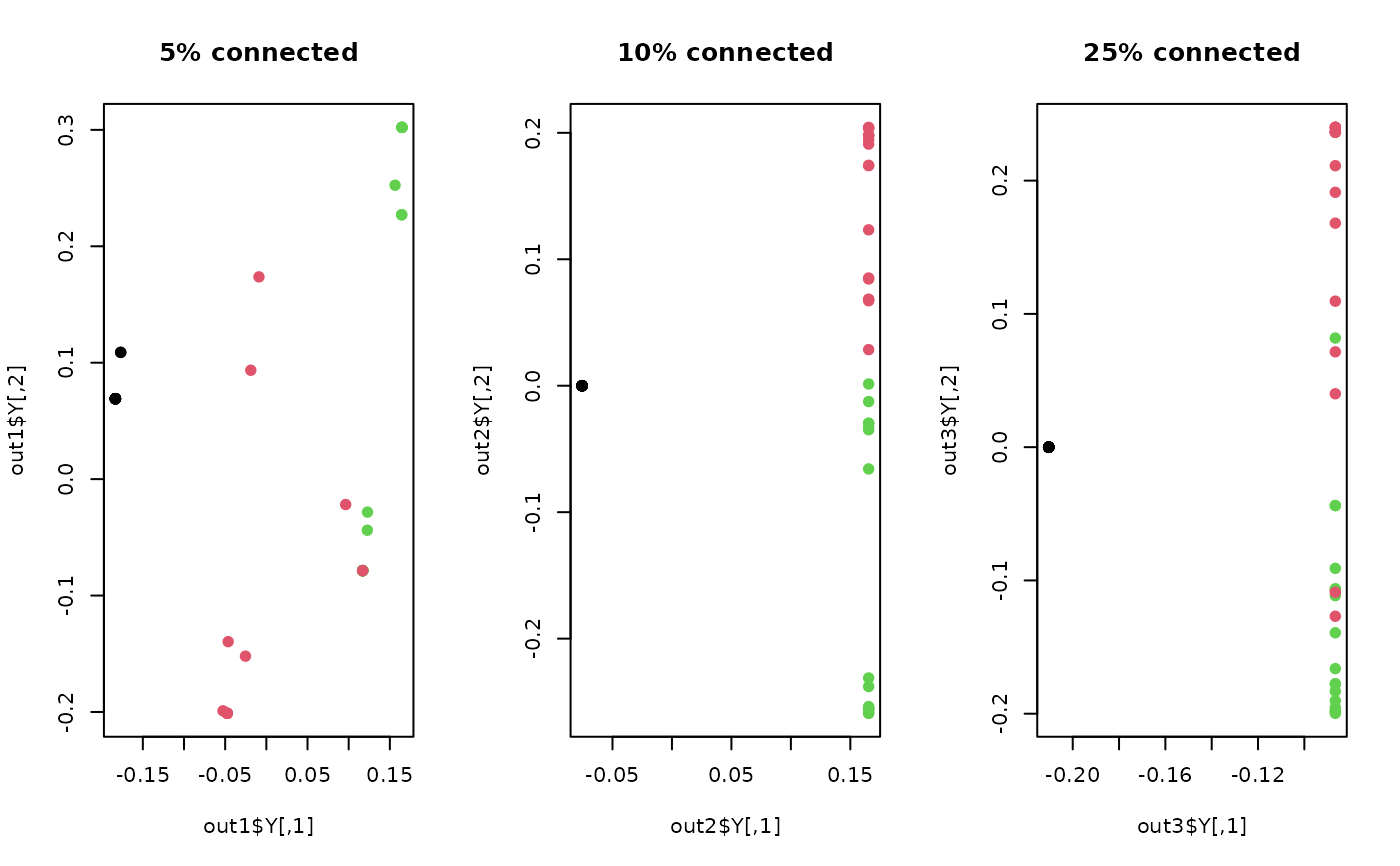do.lapeig performs Laplacian Eigenmaps (LE) to discover low-dimensional
manifold embedded in high-dimensional data space using graph laplacians. This
is a classic algorithm employing spectral graph theory.
do.lapeig(X, ndim = 2, ...)Arguments
- X
an \((n\times p)\) matrix or data frame whose rows are observations and columns represent independent variables.
- ndim
an integer-valued target dimension.
- ...
extra parameters including
- kernelscale
kernel scale parameter. Default value is 1.0.
- preprocess
an additional option for preprocessing the data. Default is
"null". See alsoaux.preprocessfor more details.- symmetric
one of
"intersect","union"or"asymmetric"is supported. Default is"union". See alsoaux.graphnbdfor more details.- type
a vector of neighborhood graph construction. Following types are supported;
c("knn",k),c("enn",radius), andc("proportion",ratio). Default isc("proportion",0.1), connecting about 1/10 of nearest data points among all data points. See alsoaux.graphnbdfor more details.- weighted
a logical;
TRUEfor weighted graph laplacian andFALSEfor combinatorial laplacian where connectivity is represented as 1 or 0 only.
Value
a named list containing
- Y
an \((n\times ndim)\) matrix whose rows are embedded observations.
- eigvals
a vector of eigenvalues for laplacian matrix.
- trfinfo
a list containing information for out-of-sample prediction.
- algorithm
name of the algorithm.
References
Belkin M, Niyogi P (2003). “Laplacian Eigenmaps for Dimensionality Reduction and Data Representation.” Neural Computation, 15(6), 1373--1396.
Examples
# \donttest{
## use iris data
data(iris)
set.seed(100)
subid = sample(1:150,50)
X = as.matrix(iris[subid,1:4])
lab = as.factor(iris[subid,5])
## try different levels of connectivity
out1 <- do.lapeig(X, type=c("proportion",0.5), weighted=FALSE)
out2 <- do.lapeig(X, type=c("proportion",0.10), weighted=FALSE)
out3 <- do.lapeig(X, type=c("proportion",0.25), weighted=FALSE)
## Visualize
opar <- par(no.readonly=TRUE)
par(mfrow=c(1,3))
plot(out1$Y, pch=19, col=lab, main="5% connected")
plot(out2$Y, pch=19, col=lab, main="10% connected")
plot(out3$Y, pch=19, col=lab, main="25% connected")
 par(opar)
# }
par(opar)
# }